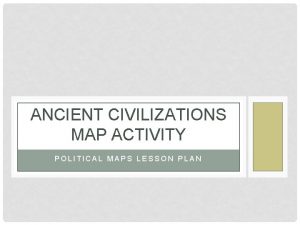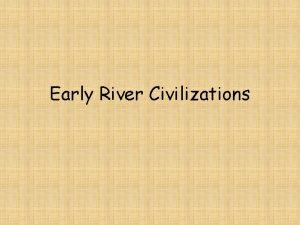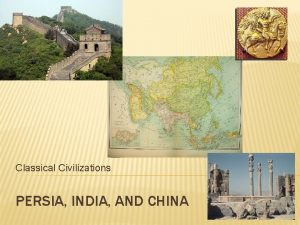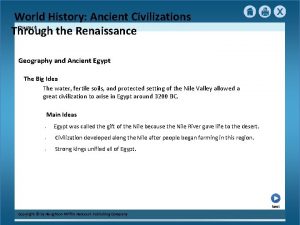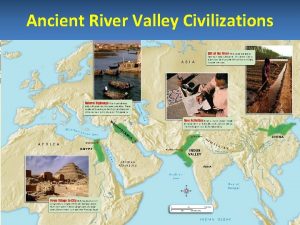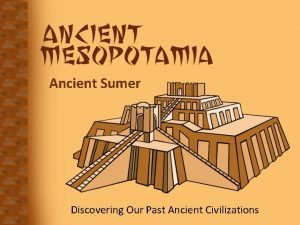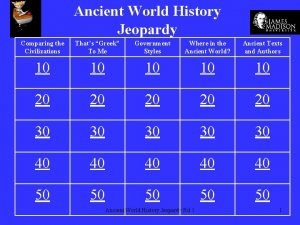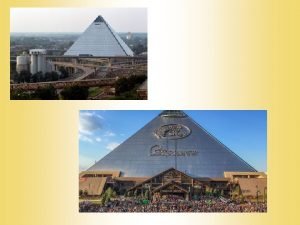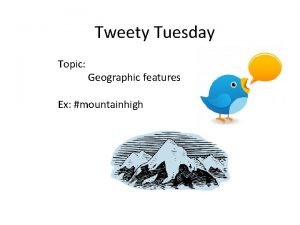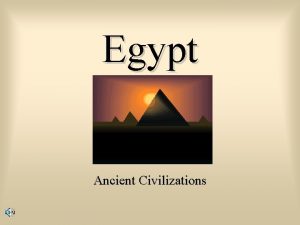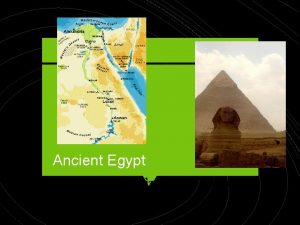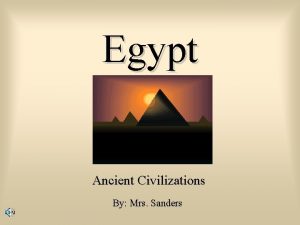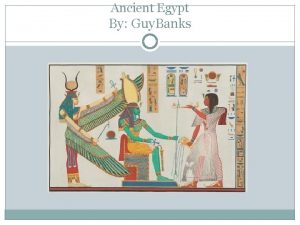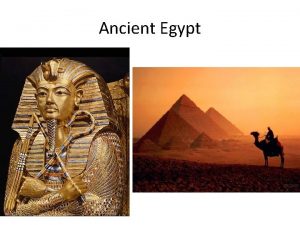Egypt Ancient Civilizations Historical Overview Ancient Egypt was











- Slides: 11

Egypt Ancient Civilizations

Historical Overview • • Ancient Egypt was the birthplace of one of the World’s greatest civilizations. It was far more advanced than European tribes of the same time period, who were still in the Stone Age. Located in the northeast corner of Africa, Egypt grew to be an important civilization for over three hundred years because of the Nile River. Egypt was originally divided into two kingdoms: Upper Egypt and Lower Egypt.

Pharaoh was believed by the Egyptians to be the supreme ruler chosen by the gods to lead his people. They believed that when a man became a pharaoh, he also became a god. To keep the bloodline of the gods pure, pharaohs often married their sisters, mothers, and cousins.

Major Time Periods of Egypt The Old Kingdom When the pharaohs built the pyramids The Middle Kingdom When training and military explorers were sent out to expand Egypt’s boundaries The New Kingdom Ending with Queen Cleopatra losing her land to Augustus Caesar and Rome

Achievements Pyramids There were about 80 along the banks of the Nile River. The largest is the Great Pyramid, built by King Khufu in about 2600 B. C. It stands about 481 feet high and covers 13 acres. The pyramids functioned as huge burial tombs for the Egyptians’ dead pharaohs and queens.

Achievements Ship-building They used the Nile River like a highway to transport people and goods to foreign lands. The first ships were made out of bundles of papyrus reeds tied together to make a canoe-like vessel. As the ship trade flourished, the hulls of the ships were made of cedar, and oars and sails were added for greater speed. Khufu Ship at the Giza Pyramids

Achievements Hieroglyphics These were pictures and symbols that served as one of the first written languages in the world.

Achievements Calendars were developed in 4241 B. C. with 365 days in a year. It was based on the flooding of the Nile River. New Years was on June 1, not January 1!

Daily Life of Workers The poor worked long hours for goods that they could exchange in the marketplace for the products they needed. Agriculture was a major trade and many workers were farmers. Boys learned a trade from their fathers, and girls were taught to care for the home and family by their mothers. Women and girls wore straight, sheath-like dresses of rough, unbleached linen. Men and boys wore short cloth kilts. Their homes were usually one-story made out of sun-dried brick. There would be a basement and four rooms. They had little furniture. Stairs led to the flat rooftop so that the family could enjoy the cool night air after the sun went down.

Daily life of the Wealthy Men were busy all day as merchants, trading along the Nile River. Others supervised the daily workings of gigantic farms. Many of the wealthiest and most powerful men in Egypt were priests. Boys were taught to read and write. Women could own land, run businesses, testify in court, and bring charges against men. Women oversaw the running of the households and gave the servants instructions for daily menus and child care. Children were allowed much playtime. Girls practiced singing and dancing. Boys wrestled and played army. Women and girls wore straight dresses of beautiful lined and a lot of jewelry. At parties, they wore cones of incense on their heads that melted slowly giving off a pleasant smell. Men and boys wore linen kilts Both men and women wore eye make-up made from black ashes. Their homes were brick and wood containing many rooms, as well as walled garden and a shrine for a favorite god.

Life after Death • The ancient Egyptians believed in an afterlife of beauty, peace, and contentment. • Since most of their lives were filled with hard work, they looked forward to death as a release from this lifetime. • They believed their souls would need to use their bodies again, so the Egyptians invented a process to embalm their bodies called mummification. • Wealthy could afford better mummification than the poor
 Political map activity
Political map activity Lesson 1 early civilizations
Lesson 1 early civilizations What river is this
What river is this What is it
What is it Ancient civilizations through the renaissance
Ancient civilizations through the renaissance Civilization ppt template
Civilization ppt template Discovering our past ancient civilizations
Discovering our past ancient civilizations Map of river valley civilizations
Map of river valley civilizations Ancient history jeopardy
Ancient history jeopardy Upper egypt and lower egypt
Upper egypt and lower egypt Egyptian irrigation systems
Egyptian irrigation systems How did the nile shape ancient egypt
How did the nile shape ancient egypt
